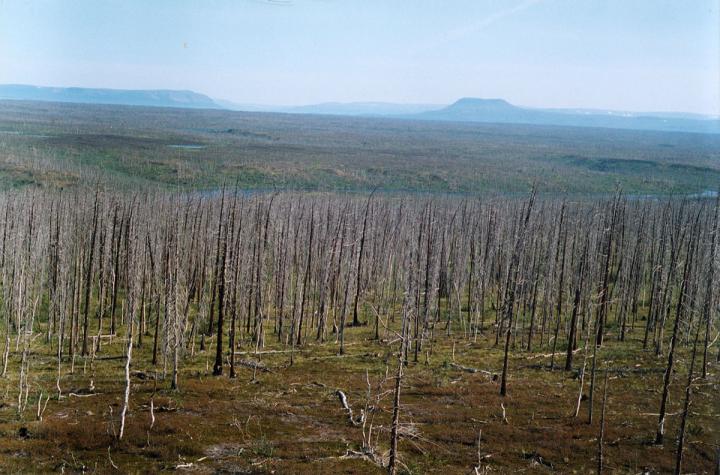
Credit: Photo courtesy of Alexander Kirdyanov
Madison, WI, September 29, 2020 – An international team of scientists that includes a USDA Forest Servicescientist based in New Hampshire used tree rings to document how “Arctic dimming,” the interference with sunlight caused by extreme pollution such as that at an industrial complex in northern Siberia, is killing trees and possibly affecting how trees respond to climate change.
The study, “Arctic Dimming and the Divergence Problem,” was published this week by the journal Ecology Letters. Kevin T. Smith, a supervisory plant physiologist with the Forest Service’s Northern Research Station, is the sole North American co-author of the study; lead author is Alexander V. Kirdyanov of the University of Cambridge in the United Kingdom.
The research team used dendroecology, dendrochemistry, and process-based forward modelling to explore the relationship of tree growth and mortality with industrial pollution at the Norilsk mining complex in northern Siberia; the complex is regarded as the most heavily polluted site on Earth. Their study describes the spatial and temporal dimensions of massive tree mortality associated with development of the industrial complex.
The study also sought to explain “The Divergence Problem,” a phenomenon in which scientists observed a surprising decline in tree growth despite increasing temperatures – normally a positive catalyst for tree growth – in the Arctic. They attribute the breakdown of the correlation between tree growth and climate in northern latitudes to “Arctic dimming,” the loss of direct sunlight available for photosynthesis due to interference by aerosol pollutants from Norilsk and other industrial centers in the Northern Hemisphere.
“Forests encircling the Arctic are important for a number of reasons, including their role in shaping the planet’s carbon cycle and climate system,” Smith said. “This study demonstrates the enormous scale of forest-atmosphere-industrial interactions, and it also demonstrates how much we can learn about trees and future of forests from the ecological and chemical history we find in tree rings.”
###
Media Contact
Jane Hodgins
[email protected]
Original Source
https:/
Related Journal Article
http://dx.




